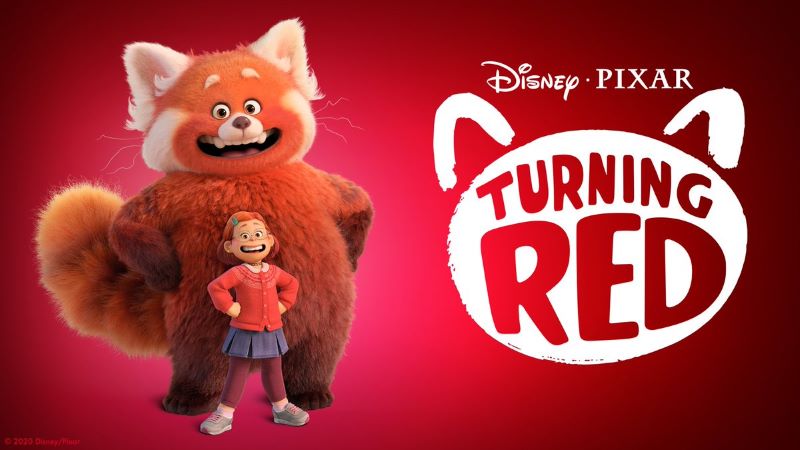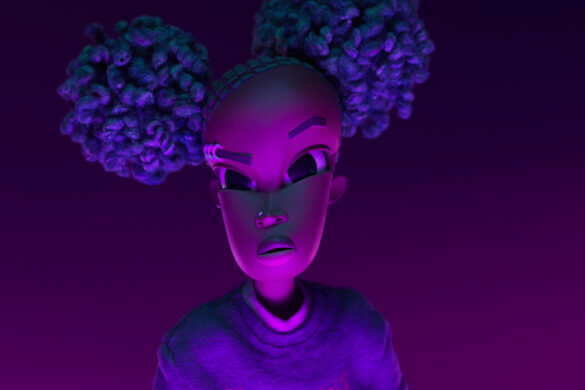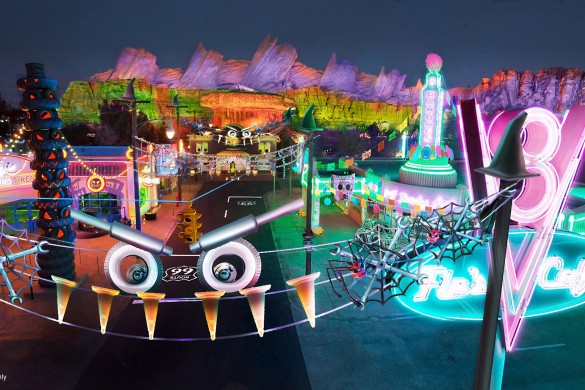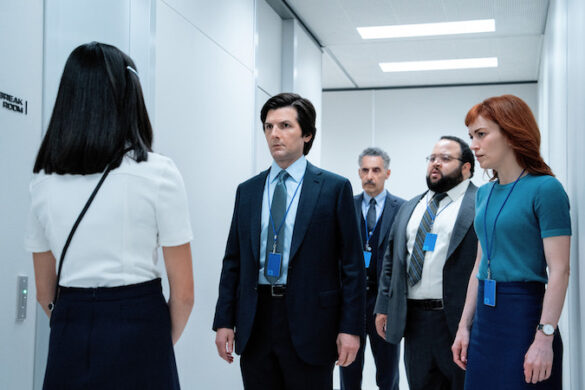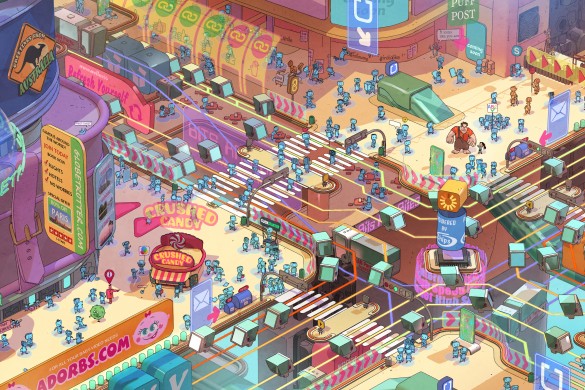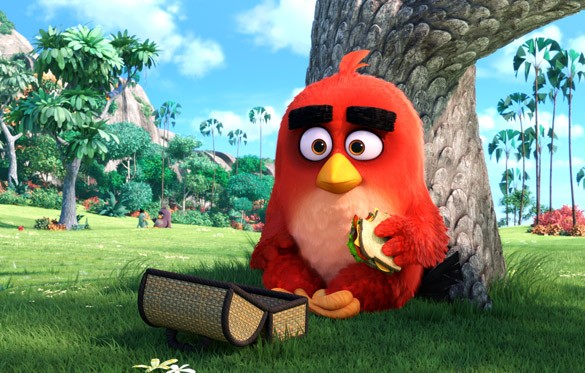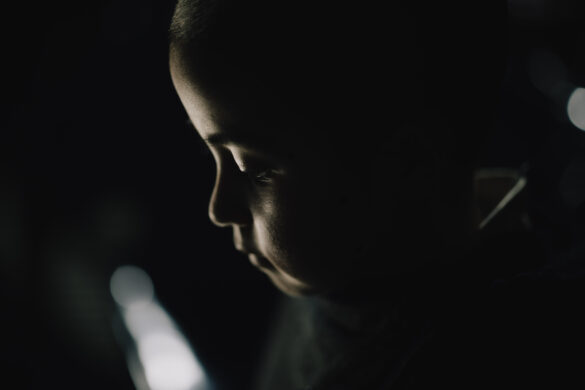After Domee Shi’s “Bao” won the Academy Award for Best Animated Short in 2018, the director went straight to work on “Turning Red,” which would be her feature directorial debut. But the film is also a major milestone for Pixar as it is the first time that a woman of color has directed a studio feature solo. In addition, it is also the first time that the studio has a film with an all-female leadership team. Not only that, but it is also one of the rare coming-of-age films to be viewed through the lens of an Asian teenager. Oh, and there’s this thing about “Turning Red” having the first animated boy band.
ThatsItLA joined their fellow journalists for a early look at “Turning Red” and spoke to many of the department heads about the upcoming film. Check out the five things they had to say.
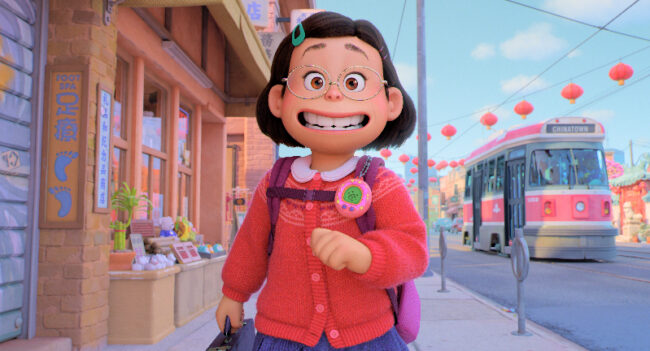
5 – Representation Matters
Though “Turning Red’s” coming of age story may resonate with all audience members, the film is viewed through the lens of a Chinese-Canadian teenage girl. As such, it offers us a unique perspective on the idea of growing up and what an authentic East-Meets-West story truly looks like. And that was important to Shi, who wanted to reflect upon Toronto, Canada’s multiculturalism.
“We wanted them to reflect the diversity I saw in my friend groups at school. I was lucky to grow up surrounded by many immigrants and Asian kids like myself. But, maybe because I’m an only child, I always managed to find a group of girlfriends who became my support system, like Mei with her friends,” she said. “And we really want Mei and her friends to feel real and reflect kids and friends that you had growing up. Dorky, sweaty, sometimes gross, but ultimately loving and supportive of each other.”
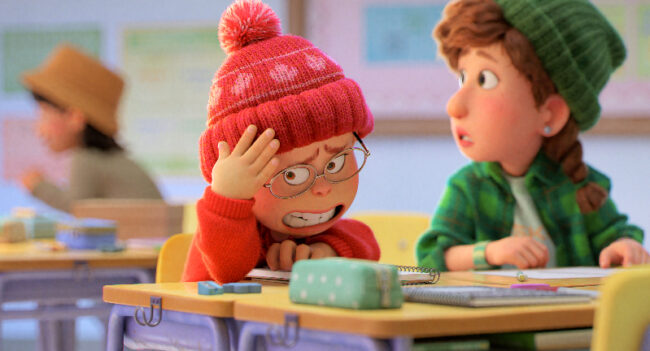
4 – Brutally Honest
Life is messy. And growing up can even be messier, especially when you are trying to balance out being dutiful to your parents while also navigating the chaos of adolescence. While we have seen coming-of-age films from Pixar, never has one been so upfront about puberty and all of the chaos that comes with changes to your body.
When shi first pitched the film, she wanted it to be unlike
any Pixar film we’ve seen before. It’s the studio’s first film to have
a contemporary teen girl protagonist and Shi wanted the world to reflect her character: colorful, chunky and cute, bold and in your face just like Mei. In addition, Shi referred to it as an Asian fever dream. “We really wanted a fun, specific backdrop to tell this coming-of-age story, so we decided to set it in Toronto, Canada, in the early 2000s,” Shi said.
“We want to use the red panda in this movie as an adorable metaphor for the scary, unadorable, awkward, and cringy, uh, changes we go through during this age,” Shi added. “More specifically, we want to explore the nuances of Asian parent/child relationships and dealing with change and all of the intergenerational conflict and how it shapes who we
become.”
Shi described “Turning Red” as quirky and surreal, but at its
core a story about a mother and daughter finally embracing change and
all of its messiness, even if it means saying goodbye to the relationship they once had.
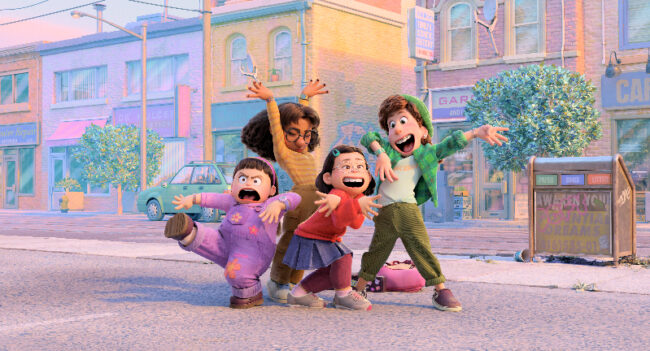
3 – All-Female leadership Team
A lot has changed between 1986 and now. Looking back, it’s almost hard to believe there were so few female storytellers in the entertainment industry, especially in animation. But 36 years and 24 films later, Pixar finally made that leap by having Shi as their first woman of color to direct a feature film solo.
“Hopefully, we are one of many female-led film teams to come. I wanted to make this movie not just for the subject matter but also to show girls and kids that women and women of color can lead big feature film productions and be successful. And I think that’s super cool,” Shi said.
“This is the first time that there has been an all-female leadership team on a feature film. Of course, I’ve been surrounded by incredibly talented women throughout my career at Pixar, so it’s not surprising that we landed a team of women at the top. Still, it was also incredibly exciting,” producer Lindsey Collins said. “The truth is that I cannot say for certain if being led by an all-women leadership team had a quantifiable effect on the movie or how we made it because, after all, we’ve all worked on several movies here.”
Collins added, “It’s not really tangible or explainable, but I do know that working on this movie every day and looking around our production pod with all the Zoom meetings that we had over the past four years really kind of inspired something unique in all of us. And that kind of indescribable spirit of pride and excitement and fun. It just shines through in the movie, and you’ll eventually hopefully get to see the whole thing and feel that same feeling on the screen.
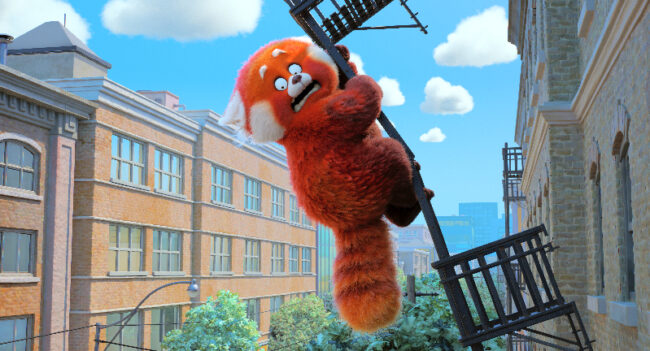
2 – Anime Influences
The visual language, technology, and techniques of animation are constantly changing. So as studios push those boundaries, they are bound to do something so daring that some animators think something like blending 2D anime influences into a 3D world cannot be done. However, “Turning Red” makes that impossible achievement. So, according to production designer Rona Liu, they watched a lot of anime. “We wanted to mix in that chunky, cute design sensibility, expressive character designs, and poppy color palettes,” Liu said.
Additionally, audiences will find some very familiar anime influences in the character’s expressions. “We looked towards anime for inspirations for her
multitude of expressions. Stars in her eyes when she’s amazed. Giant droplets of tears when she’s sad and pupils that can shrink down to a dot when she panics,” Liu said.
But it wasn’t like they could just plug in those same anime influences into a 3D world. “The first visual goal we dove into was less about the 2D versus 3D and more about the overall style of the shapes of the world,” Visual Effects Supervisor Danielle Feinberg said. She would hone in on the chunky cute aspect that Shi wanted to have in the film. Shi’s description would serve as the foundation for many of the film’s designs, from the characters to the architecture and even temple statues. Even the cars are chunky cute.
“We wanted to tap into Domee’s passion for the two genres of animation that she loves, anime being the East and Pixar Disney animation being the West. ‘Turning Red’ lives somewhere in between these styles. We took influences from both genres and merged them together.” Patty Kihm said. We often referenced anime eyes on this film. And one of the great things about anime is that it’s not afraid to push the characters’ designs to the extreme. The character’s eye shapes can be drastically different
depending on the mood of the character. You can see this
in how much the eyes change size and shape.”
“They even add hearts. Basically, anything to help the characters emote. In Turning Red, we wanted to use this same eye language. We added stars, highlights, shrunk the pupils down to tiny dots, and created crescent shapes for her eyes. Luckily, Domee had a really strong design sense. Shi would give us drawings for how the characters should look.” Other anime expressions include moon-shaped eyes and cat mouths.
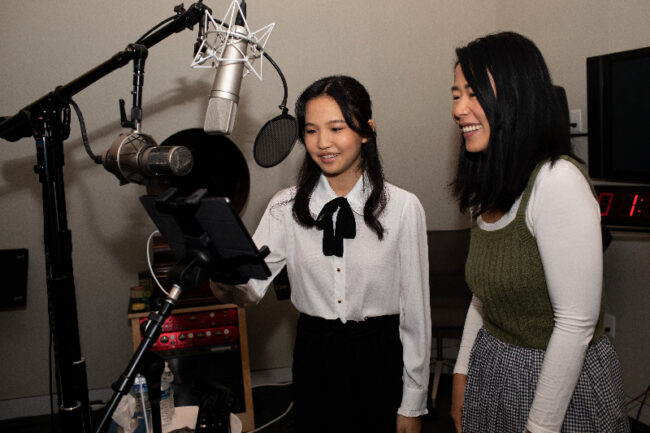
1 – Finding Rosalie Cheng
Usually, temp voices are called in to act as a place card for the A-list star of an animated film. But things are a bit different for Rosalie Cheng, who voices Mei Lee in “Turning Red.” While she was brought in as a temp voice for the lead role, Shi was so impressed by her performance that she made an interesting proposal.
Shi showed us some behind-the-scenes footage of herself and Cheng recording lines during the video presentation. But it was when Shi went completely off-script and asked her to officially play Mei that took Cheng by surprise.
“It’s just that, well, [SIGHS] from day one, you’ve been doing an incredible job recording here at Pixar. Not only are you super talented, but you’ve also been absolutely fearless and bring all of yourself to the mic every single day. And because of you, this character is alive. She’s smart, she’s goofy, amazing, dorky, funny, and best of all, real. And because of that, and because of everything you are, we would love to make it official, Rosalie Chiang, on behalf of “Red,” will you play [Mei Lee] for us?”
Naturally, Cheng thought that the proposal wasn’t real. But when she discovered that Shi and everyone else was being honest with her, she cried. Remember that big films like this would typically have A-list stars play in big-budget studio animated films. So it is refreshing to see Pixar cast actual teenagers in the lead role.
Pixar’s “Turning Red” launches on Disney+ on March 11, 2022.

